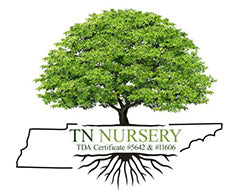





























Deer-Resistant Plants
Deer-resistant plants have become increasingly popular in landscaping for their ability to deter these graceful but often troublesome creatures from causing damage to gardens and landscapes. Their benefits extend beyond just the protection of your plants, offering a range of advantages that can enhance your outdoor spaces' overall appeal and functionality.
First and foremost, they are a practical solution to mitigate the damage caused by foraging deer. Deer are known for devouring flowers, shrubs, and even trees. By incorporating deer-resistant plants into your landscape design, you can reduce the likelihood of such damage, preserving the beauty and health of your plants.
Besides their protective qualities, the plants also offer aesthetic benefits. Many of these plants are chosen for their ability to deter deer and their ornamental value. They come in various colors, sizes, and textures, allowing you to create visually appealing, resilient, attractive landscapes. From vibrant perennials like Russian sage to evergreen shrubs like boxwood, there are plenty of options to choose from that complement your design preferences.
Deer-Resistant Plants Are Low Maintenance
Furthermore, they are often low-maintenance, making them a great option for busy homeowners or those looking to conserve water and resources. Once established, many plants require minimal care and can thrive in various soil conditions. This saves you time and effort and contributes to sustainable gardening practices.
Another advantage of them is their role in supporting local ecosystems. Since deer are herbivores, they play a significant role in shaping plant communities. When deer overgraze and eliminate certain plant species, it can disrupt the natural balance of local ecosystems. By planting them, you can help protect and preserve native plants and the animals that depend on them.
They also contribute to the creation of wildlife-friendly landscapes. Many of these plants produce nectar-rich flowers that attract pollinators like bees and butterflies, enhancing biodiversity and fostering a healthy ecosystem in your garden. Some have berries or seeds that provide food for birds and other wildlife, further enriching the environment.
In conclusion, the benefits of incorporating them into your landscape extend beyond protection from deer damage. These plants offer a combination of practicality, aesthetic appeal, low maintenance, and support for local ecosystems. By choosing Them plants, you can enjoy the beauty of your garden while reducing the need for constant care and fostering a more sustainable and wildlife-friendly environment.

